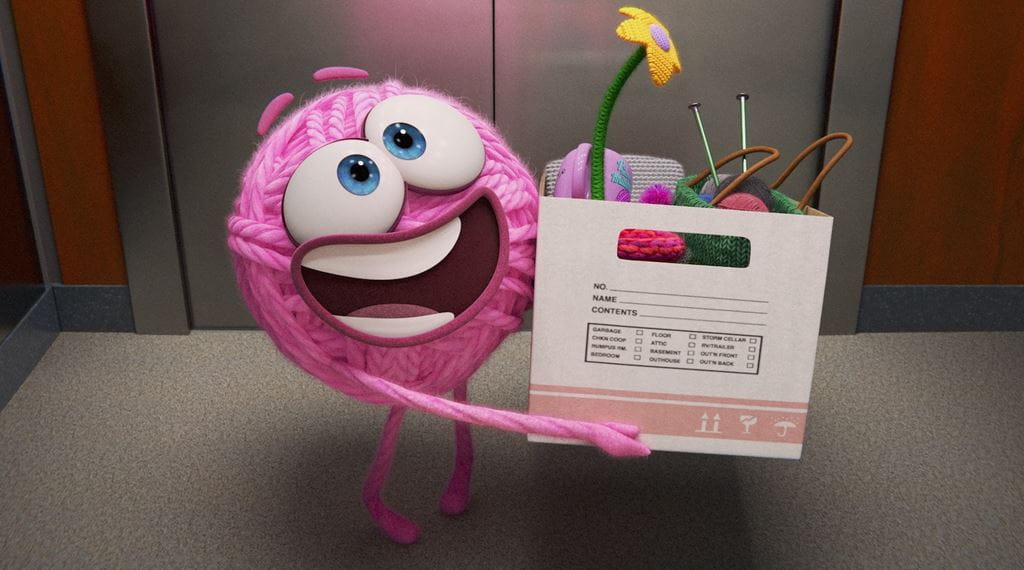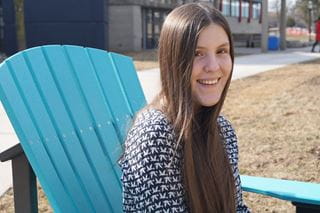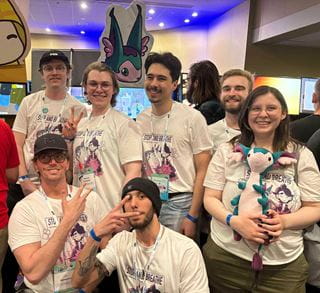
Unravelling Pixar’s “Purl”
 by Meagan Kashty – May 8, 2019
by Meagan Kashty – May 8, 2019 Officially, Kristen Lester didn’t begin developing her directorial debut until six months before it was completed. In another sense, however, the concept for the short had been maturing since the Pixar story artist began her career in animation over 14 years ago.
In Purl, Lester (Animation ‘04) weaves together the story of an animated pink ball of yarn whose outgoing enthusiasm for her new job is squashed by the “bro” culture of her office. Throughout the short, Purl learns what aspects of her personality she’s willing to sacrifice in order to fit in with her new co-workers.

The film is part of Pixar’s new SparkShorts program — a series of short, animated films designed to give women and people of colour more leadership opportunities in animation. The program’s first three films, including Purl, were released in February on YouTube. Each short takes just six months to produce, compared to the four-to-six years it takes to release one of Pixar’s animated features.
“Since SparkShorts won’t screen in front of a feature film, they’re not supposed to have the same flavour as what people might expect from a Pixar short,” explains Lester. “Plus, there’s very little creative oversight, so we don’t have to go through the same checks and balances. I was free to find my own voice.”
One of the advantages of a six-month lead time is that Purl’s efforts to tackle toxic workplace culture is particularly topical. Lester’s heard from women who identify with Purl’s struggle to break the glass ceiling in corporate culture, changing their physical appearance and attitude to get ahead. She’s also heard from men, who say that after watching Purl, they better understood of how their actions at work may be perceived as aggressive or exclusive. Purl, a ball of yarn, is in part a nod to the way society associates knitting with the feminine — a small hint to the film’s theme of gender politics.
In fact, Purl is based on Lester own experiences in the male-dominated animation industry. After starting as a storyboard artist with Pixar in 2012, she joined a female-focused resource group created by a few of her co-workers. The women would come together to chat about their careers and their experiences in other workplaces. As the discussions progressed, Lester realized that prior to Pixar, working on teams where she was often the only woman had left a lasting impact. She, like Purl, often found herself trying to be “one of the guys” to be accepted.
“When I came to Pixar, I had a bit of an awakening,” Lester says. “If I kept taking the female part of myself and pushing it aside, then I was telling all the other women in animation coming after me that that’s what they needed to do to survive and thrive in the business. I realized at some point that’s not what I wanted to do anymore.”
Lester’s aspirations to be a role model stems from the fact that she was inspired by other animators in the industry. She was first introduced to the prolific works of Disney artist and children's book author Bill Peet as a child. Later on, the Archie comics she read as a teenager and the Disney classic The Little Mermaid also prompted Lester’s fascination with storytelling and drawing.
But Lester took the path less travelled to Pixar’s head office in Emeryville, Calif. After graduating from Sheridan’s animation program, she honed her skills at a series of studios, including Squeeze Productions, Starz Animation and Walt Disney Animation Studios. Her credits also include work on Sym-Bionic Titan (2010), Despicable Me (2010) and Blue Sky’s Epic (2013). Throughout the course of her career, Lester applied to work at Pixar no less than six times.
"If I kept taking the female part of myself and pushing it aside, then I was telling all the other women in animation coming after me that that’s what they needed to do to survive and thrive in the business. I realized at some point that’s not what I wanted to do anymore.”
“I wanted to work so badly at a place that seemed like they valued the same things I valued about storytelling,” she explains. “They made movies that inspired me and interested me.”
When she was eventually hired in 2012, she recalls running into a recruiter in the head office hallways on her first day, who exclaimed “You finally made it!” Since then, Lester has had the opportunity to work with creatives such as director Andrew Stanton on Finding Dory, and is currently working with Up and Inside Out director Pete Docter on a new Pixar feature.
Lester is proud to be among several female animators at Pixar, including fellow Sheridan alumna Domee Shi, who recently earned an Academy Award for her short, Bao.
But although Lester says it’s been a blessing to be able to work with creative power houses at Pixar, she’s mindful of the relationships she formed during her early days as an animator. “It’s so important to form friendships and solid relationships when you’re in school so that when you’re in the industry, you still have the support system of people that will stand behind you and encourage you and push for you.”
Images courtesy of Pixar.
Media Contact
For media inquiries, contact Sheridan’s Communications and Public Relations team.



